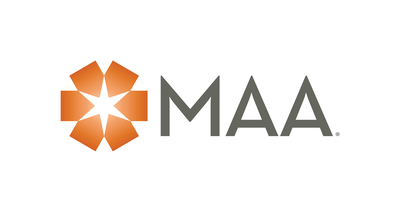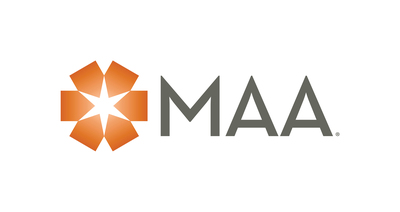Maduro Blows Through Venezuela’s Dollar Stockpile in New Threat to Regime
(Bloomberg) — Since declaring himself the winner of July’s presidential vote, Venezuela’s Nicolás Maduro has been condemned by governments across the world, targeted by massive street protests and spurned by some of his closest allies.
Most Read from Bloomberg
Now, a new problem is emerging for the authoritarian leader: The bolivar has tumbled in unofficial markets to trade as much as 20% weaker than the official rate, the biggest gap since 2022, as the supply of dollars that the government pumps into the financial system dries up. Maduro, it seems, blew through a big chunk of the money the country stockpiled in the run-up to the election, spending on campaign rallies in a futile attempt to court voters and win legitimately.
The growing crisis threatens to revive a cycle of rapid inflation and currency debasement that sent Venezuela into a tailspin when economic output collapsed an estimated 80% over the past decade. Maduro had managed to stabilize the bolivar and slow price increases in the past two years by imposing austerity and keeping a lid on money printing, providing a dose of relief for Venezuelans that’s now at risk.
The bolivar is overvalued at the official rate and the government needs to allow it to weaken, according to José Manuel Puente, an economist at the Institute of Higher Education in Administration, a private business school in Caracas.
“The government decided to keep the exchange rate anchored for political and electoral reasons,” he said in an interview. “The imbalance will end as it always does in Venezuela: with a large exchange rate adjustment, probably with an inflationary shock, and with an economic slowdown or recession.”
Now, as Maduro dismisses demands from foreign governments, protesters and the political opposition for an audit of the election results, his administration has seemed to recognize the precariousness of the economic situation. At the end of last month, officials announced plans to reduce reserve requirements for banks in a bid to spur lending in the moribund local credit market.
The biggest pain point, however, is in the currency market, where demand for greenbacks has overwhelmed the limited supply offered by the central bank, reviving a parallel market used to skirt supply shortages and controls. In unofficial markets it takes 43.5 bolivars to buy a dollar. That compares with 36.5 per dollar at the government rate.
But it’s very difficult to access that official rate: The local supply of hard currency was constrained as the central bank limited sales to just $300 million last month, a third of what it offered in July when the government increased spending around the presidential election, according to estimates by Caracas-based financial analysis firm Ecoanalítica.
In the run-up to the vote, Maduro covered the capital in ads, billboards and murals, and staged almost daily campaign events across the country that often included musical acts and elaborate production. All that spending compelled the central bank to step up dollar sales to mop up the excess supply of bolivars unleashed by government spending.
“That is not waste,” Maduro said on state television Tuesday, reacting to the article. “It’s the necessary investment for the country to continue its course, step by step, toward a full and complete recovery.”
The central bank is in a jam partly because the bolivar is overvalued given the rate of inflation. Maduro’s government allowed it to weaken just 0.1% last month, creating an imbalance in a country where monthly inflation is running at 1.4%.
“With no supply at the official market, that demand moves to the parallel market,” said Asdrúbal Oliveros, the head of Ecoanalítica. “This creates a lot of pressure for the private sector, which must compensate by increasing dollar prices to offset smaller margins.”
The high cost of living is already a burden on Venezuelans, 82% of whom live in poverty, and could set off a new wave of migration, adding to the almost 8 million people who have fled the country since 2015. At the peak of the crisis, prices were soaring 130,000% a year.
For now, Maduro continues to follow the playbook of autocratic leaders before him. Over the weekend, the opposition presidential candidate who ran against him, Edmundo González, fled the country under threat of arrest. While Maduro claims to have won with 52% support, the opposition says it has evidence showing a win for González.
Amid the upheaval, Venezuelan businesses need a weaker bolivar to better compete with imports, according to Adán Celis, president of the country’s largest business association, Fedecámaras.
Business representatives have asked the government to let the bolivar slide so that the industry can “take a breath,” he said.
(Updates with comments from Maduro in the 10th paragraph.)
Most Read from Bloomberg Businessweek
©2024 Bloomberg L.P.
Tyler Technologies Director Trades Company's Stock
A substantial insider sell was reported on September 9, by Glenn Carter, Director at Tyler Technologies TYL, based on the recent SEC filing.
What Happened: A Form 4 filing with the U.S. Securities and Exchange Commission on Monday outlined that Carter executed a sale of 3,350 shares of Tyler Technologies with a total value of $1,951,617.
During Tuesday’s morning session, Tyler Technologies shares up by 0.5%, currently priced at $591.91.
Unveiling the Story Behind Tyler Technologies
Tyler Technologies provides a full suite of software solutions and services that address the needs of cities, counties, schools, courts and other local government entities. The company’s three core products are Munis, which is the core ERP system, Odyssey, which is the court management system, or CMS, and payments. The company also provides a variety of add-on modules and offers outsourced property tax assessment services.
Key Indicators: Tyler Technologies’s Financial Health
Revenue Growth: Tyler Technologies displayed positive results in 3 months. As of 30 June, 2024, the company achieved a solid revenue growth rate of approximately 7.28%. This indicates a notable increase in the company’s top-line earnings. As compared to competitors, the company encountered difficulties, with a growth rate lower than the average among peers in the Information Technology sector.
Exploring Profitability:
-
Gross Margin: The company issues a cost efficiency warning with a low gross margin of 43.96%, indicating potential difficulties in maintaining profitability compared to its peers.
-
Earnings per Share (EPS): The company excels with an EPS that surpasses the industry average. With a current EPS of 1.59, Tyler Technologies showcases strong earnings per share.
Debt Management: Tyler Technologies’s debt-to-equity ratio is below the industry average. With a ratio of 0.21, the company relies less on debt financing, maintaining a healthier balance between debt and equity, which can be viewed positively by investors.
Evaluating Valuation:
-
Price to Earnings (P/E) Ratio: Tyler Technologies’s stock is currently priced at a premium level, as reflected in the higher-than-average P/E ratio of 121.94.
-
Price to Sales (P/S) Ratio: A higher-than-average P/S ratio of 12.5 suggests overvaluation in the eyes of investors, considering sales performance.
-
EV/EBITDA Analysis (Enterprise Value to its Earnings Before Interest, Taxes, Depreciation & Amortization): At 59.43, the company’s EV/EBITDA ratio outperforms industry norms, reflecting positive market perception. This positioning indicates optimistic expectations for the company’s future performance.
Market Capitalization: Indicating a reduced size compared to industry averages, the company’s market capitalization poses unique challenges.
Now trade stocks online commission free with Charles Schwab, a trusted and complete investment firm.
Why Pay Attention to Insider Transactions
Insider transactions should be considered alongside other factors when making investment decisions, as they can offer important insights.
Considering the legal perspective, an “insider” is defined as any officer, director, or beneficial owner holding more than ten percent of a company’s equity securities, according to Section 12 of the Securities Exchange Act of 1934. This includes executives in the c-suite and major hedge funds. These insiders are mandated to disclose their transactions through a Form 4 filing, to be submitted within two business days of the transaction.
Pointing towards optimism, a company insider’s new purchase signals their positive anticipation for the stock to rise.
Nevertheless, insider sells may not necessarily indicate a bearish view and can be influenced by various factors.
Deciphering Transaction Codes in Insider Filings
Digging into the details of stock transactions, investors frequently turn their attention to those taking place in the open market, as outlined in Table I of the Form 4 filing. A P in Box 3 indicates a purchase, while S signifies a sale. Transaction code C signals the conversion of an option, and transaction code A denotes a grant, award, or other acquisition of securities from the company.
Check Out The Full List Of Tyler Technologies’s Insider Trades.
This article was generated by Benzinga’s automated content engine and reviewed by an editor.
Market News and Data brought to you by Benzinga APIs
© 2024 Benzinga.com. Benzinga does not provide investment advice. All rights reserved.
Petco Stock Climbs After Q2 Results
Petco Health and Wellness Company, Inc. WOOF reported second-quarter financial results after Tuesday’s closing bell. Here’s a look at the details from the report.
The Details: Petco reported quarterly losses of nine cents per share, which missed the analyst consensus estimate of losses of two cents per share. Quarterly sales of $1.52 billion met the analyst consensus estimate and represented a 1.99% increase over the same period last year.
The company will host a conference call at 5 p.m. ET to discuss the results.
Petco’s consumables business was up 1.5% versus the prior year, and services and other business was up 3.1% year-over-year. Growth in the company’s consumables and services and other business was offset by the company’s supplies and companion animal business, down 4.7% versus the prior year.
Read Next: What’s Going On With Apple Stock Following iPhone 16 Release?
“Our second quarter results demonstrate the ongoing work of our teams to strengthen our retail fundamentals and accelerate the path to improved profitability,” said Joel Anderson, Petco’s CEO.
“I could not be more excited to lead Petco at this pivotal time. Looking ahead, I see tremendous opportunities for us to significantly improve our operating and financial performance and better leverage Petco’s strengths to capture greater share, deliver sustained profitability, and create value for shareholders,” Anderson added.
Outlook: Petco sees third-quarter losses of between three cents and four cents per share, versus the estimate of losses of three cents, and revenue of approximately $1.5 billion, versus the $1.51 billion estimate. The company expects net interest expenses of approximately $145 million and capital expenditures of approximately $140 million for fiscal year 2024.
WOOF Price Action: According to Benzinga Pro, Petco shares are up 2.62% after-hours at $3.15 after gaining 7.72% during Tuesday’s regular session.
Read Also:
Image: Unsplash
Market News and Data brought to you by Benzinga APIs
© 2024 Benzinga.com. Benzinga does not provide investment advice. All rights reserved.
Cannabis Stock Movers For September 10, 2024
GAINERS:
LOSERS:
This article was generated by Benzinga’s automated content engine and reviewed by an editor.
Market News and Data brought to you by Benzinga APIs
© 2024 Benzinga.com. Benzinga does not provide investment advice. All rights reserved.
Click on the image for more info.
Cannabis rescheduling seems to be right around the corner
Want to understand what this means for the future of the industry?
Hear directly for top executives, investors and policymakers at the Benzinga Cannabis Capital Conference, coming to Chicago this Oct. 8-9.
Get your tickets now before prices surge by following this link.
Research Finds 22% of Nonprofit Workers Experience Financial Hardship
Washington, Sept. 10, 2024 (GLOBE NEWSWIRE) — Independent Sector and United For ALICE today released their first-ever ALICE in the Nonprofit Workforce: A Study of Financial Hardship report, which finds that more than one in five nonprofit employees in the United States struggle financially.
This study is the first of its kind to examine financial insecurity among nonprofit workers, who play critical roles in health care, education, social services, advocacy, religious institutions, and other areas of civil society. It rigorously analyzes publicly available data to understand the financial status of the country’s 13.9 million nonprofit employees in greater detail than ever before.
Of all nonprofit workers in 2022, 5% were below the official U.S. poverty level, and another 17% — more than three times as many — were ALICE®, or Asset Limited, Income Constrained, Employed. ALICE nonprofit employees live in households that earn more than the Federal Poverty Level, but less than what it costs to survive in the counties where they live. They can’t afford the basics: housing, child care, food, transportation, health care, technology, and taxes.
The ALICE in the Nonprofit Workforce report showed that in 2022:
- More than one in five nonprofit workers lived paycheck to paycheck: 22% of nonprofit employees fell below the ALICE Threshold, which includes ALICE households and households in poverty combined.
- Nearly one-third of workers at social assistance and at arts, entertainment, and recreation nonprofits faced financial hardship: The nonprofits with the highest rates of financial hardship included social assistance (32%); arts, entertainment, and recreation (32%); and religious organizations (29%). Those with the lowest rates included health care (16%) and educational services (18%).
- Systemic inequalities continued to impact financial stability: Black and Hispanic nonprofit workers were twice as likely as White workers to experience financial hardship, and one-third of nonprofit workers with disabilities struggled financially.
- Nonprofit workers with children were at higher risk: 30% of nonprofit workers with children, and 53% of single parents working at nonprofits, experienced financial hardship.
- Wages lagged behind inflation for many nonprofit workers: For example, rehabilitation counselors working at nonprofits saw a 24% median wage increase from 2010 to 2022, while the median cost of household necessities rose by 46%.
The report’s findings highlight the urgent need for action to support the nonprofit workforce.
“The nonprofit sector is fundamental to American society, delivering vital services and resources to those who need them most. Yet, it is deeply troubling that so many of our own nonprofit workers — those who dedicate their lives to supporting others — are themselves facing financial hardship,” said Akilah Watkins, Ph.D., Independent Sector President and CEO. “This groundbreaking study gives us both a starting point and a call to action. We must find data-informed solutions, whether through policy or practice, to meet the needs of nonprofit workers who are struggling financially. Investing in the health of our workforce is essential, because it takes a thriving and well-equipped workforce to drive meaningful and sustained change in our communities and our nation.”
“While the data reveals hardship among nonprofit employees, it also offers some bright spots that can lead the way for broader change,” said Stephanie Hoopes, Ph.D., United For ALICE National Director. “For instance, women are earning more in nonprofit than for-profit organizations, and sectors like health care are showing that nonprofits can achieve their mission while providing greater financial stability for their workers.”
As a companion to this study, Independent Sector and United For ALICE will next publish a fact sheet on the economic benefits of achieving financial security for the nonprofit workforce, as well as a national- and state-level data dashboard.
Read the full ALICE in the Nonprofit Workforce: A Study of Financial Hardship report at: https://independentsector.org/nonprofit-workforce.
###
About Independent Sector
Independent Sector is the only national membership organization that brings together a diverse community of changemakers at nonprofits, foundations, and corporate giving programs to ensure all people in the United States thrive. For more information, visit: IndependentSector.org.
About United For ALICE
United For ALICE is a U.S. research organization, led by United Way of Northern New Jersey, that drives innovation, research and action to improve life across the country for ALICE® (Asset Limited, Income Constrained, Employed) and for all. For more information, visit: UnitedForALICE.org.

Nina Ford Independent Sector 202-467-6113 media@independentsector.org Christine Aromando United For ALICE, United Way of Northern New Jersey 973-993-1160, x109 Christine.Aromando@UnitedWayNNJ.org
Market News and Data brought to you by Benzinga APIs
© 2024 Benzinga.com. Benzinga does not provide investment advice. All rights reserved.
Biden Faces Pressure To Release Thousands Imprisoned For Federal Cannabis Convictions
A coalition of cannabis advocates is ramping up pressure on President Joe Biden to act on his promise of cannabis justice.
On Tuesday, the Last Prisoner Project (LPP) and several partner organizations announced the Countdown for Clemency campaign, urging Biden to grant clemency to nearly 3,000 individuals still incarcerated for federal marijuana offenses, Marijuana Moment reported.
See Also: President Biden Pardons, Commutes 16 Non-Violent Drug Offenders: Cannabis Prisoners Excluded
Activists Call For Broader Action
Despite Biden’s past efforts, which included pardoning thousands of people with federal cannabis possession convictions, no one has been released from prison as a result.
The new campaign is pushing the president to use his clemency powers to right this wrong. “Time is running out on President Biden’s term, but it is not too late for him to undo the harms inflicted on families impacted by cannabis criminalization,” said Sarah Gersten, executive director of LPP.
The campaign’s website features a large countdown clock, symbolizing the dwindling time before Biden’s term ends. While Biden’s pardons have helped people clear their records, the administration has not commuted the sentences of those still behind bars for cannabis-related offenses.
Recent polls show that Americans overwhelmingly support clemency for those incarcerated for marijuana offenses, now legal in many states. 84% of voters support releasing people serving time for cannabis crimes, while 72% approve of Biden’s previous pardons for non-violent possession convictions.
Congressional Push Adds Weight
The campaign for clemency has gained momentum in Congress, where 36 lawmakers wrote to Biden in March, urging him to commute the sentences of non-violent cannabis offenders.
Biden, however, has maintained a cautious stance. At a Wisconsin campaign stop earlier this year, he expressed his support for rescheduling marijuana but drew a distinction between users and dealers. “If you’re out selling it, if you’re out growing, it’s a different deal,” Biden said.
The Clock Is Ticking As November Elections Loom
With the 2024 election approaching, the administration appears aware of the growing public demand for cannabis reform.
Both Biden and Vice President Kamala Harris have emphasized their efforts to address the issue, including a carefully timed announcement on April 20, a significant date in cannabis culture.
Harris has also publicly called on the Drug Enforcement Administration (DEA) to speed up its review of marijuana’s classification under federal law.
With only months left in Biden’s presidency, the clock is ticking for thousands of individuals still serving time for cannabis offenses.
Read Next:
Market News and Data brought to you by Benzinga APIs
© 2024 Benzinga.com. Benzinga does not provide investment advice. All rights reserved.
MAA to Participate in the BofA Securities 2024 Global Real Estate Conference
GERMANTOWN, Tenn., Sept. 9, 2024 /PRNewswire/ — Mid-America Apartment Communities, Inc., or MAA MAA, today announced that members of MAA senior management will participate in a round table presentation at the BofA Securities 2024 Global Real Estate Conference. The presentation will take place on Wednesday, September 11, 2024, at approximately 2:15 p.m. Eastern Time.
A live webcast of the company’s presentation will be accessible through the “Corporate Profile” section of the “For Investors” page of MAA’s website at www.maac.com on the day of the event.
About MAA
MAA is a self-administered real estate investment trust (REIT) and member of the S&P 500. MAA owns or has ownership interest in apartment communities primarily throughout the Southeast, Southwest and Mid-Atlantic regions of the U.S. focused on delivering strong, full-cycle investment performance. For further details, please refer to the “For Investors” page at www.maac.com or contact Investor Relations at investor.relations@maac.com.
![]() View original content to download multimedia:https://www.prnewswire.com/news-releases/maa-to-participate-in-the-bofa-securities-2024-global-real-estate-conference-302242466.html
View original content to download multimedia:https://www.prnewswire.com/news-releases/maa-to-participate-in-the-bofa-securities-2024-global-real-estate-conference-302242466.html
SOURCE MAA
Market News and Data brought to you by Benzinga APIs
© 2024 Benzinga.com. Benzinga does not provide investment advice. All rights reserved.
Insider Unloading: Tardan Francois Sells $159K Worth Of NV5 Global Shares
Tardan Francois, Director at NV5 Global NVEE, executed a substantial insider sell on September 9, according to an SEC filing.
What Happened: Francois’s recent move involves selling 1,661 shares of NV5 Global. This information is documented in a Form 4 filing with the U.S. Securities and Exchange Commission on Monday. The total value is $159,990.
At Tuesday morning, NV5 Global shares are down by 0.0%, trading at $89.49.
Discovering NV5 Global: A Closer Look
NV5 Global Inc is a provider of technology, conformity assessment, and consulting solutions to public and private sector clients in the infrastructure, utility services, construction, real estate, environmental, and geospatial markets, operating nationwide and abroad. The Company’s clients include the U.S. Federal, state and local governments, and the private sector. The operating business segments are Infrastructure, Building, Technology & Sciences, and Geospatial Solutions. The maximum revenue derives from the infrastructure segment.
Key Indicators: NV5 Global’s Financial Health
Revenue Growth: Over the 3 months period, NV5 Global showcased positive performance, achieving a revenue growth rate of 6.15% as of 30 June, 2024. This reflects a substantial increase in the company’s top-line earnings. As compared to competitors, the company encountered difficulties, with a growth rate lower than the average among peers in the Industrials sector.
Insights into Profitability:
-
Gross Margin: The company excels with a remarkable gross margin of 52.16%, indicating superior cost efficiency and profitability compared to its industry peers.
-
Earnings per Share (EPS): NV5 Global’s EPS reflects a decline, falling below the industry average with a current EPS of 0.51.
Debt Management: With a below-average debt-to-equity ratio of 0.34, NV5 Global adopts a prudent financial strategy, indicating a balanced approach to debt management.
Financial Valuation Breakdown:
-
Price to Earnings (P/E) Ratio: The current P/E ratio of 44.37 is below industry norms, indicating potential undervaluation and presenting an investment opportunity.
-
Price to Sales (P/S) Ratio: The current P/S ratio of 1.55 is below industry norms, suggesting potential undervaluation and presenting an investment opportunity for those considering sales performance.
-
EV/EBITDA Analysis (Enterprise Value to its Earnings Before Interest, Taxes, Depreciation & Amortization): The company’s EV/EBITDA ratio of 15.08 trails industry averages, indicating a potential disparity in market valuation that could be advantageous for investors.
Market Capitalization Analysis: The company exhibits a lower market capitalization profile, positioning itself below industry averages. This suggests a smaller scale relative to peers.
Now trade stocks online commission free with Charles Schwab, a trusted and complete investment firm.
Uncovering the Importance of Insider Activity
Emphasizing the importance of a comprehensive approach, considering insider transactions is valuable, but it’s crucial to evaluate them in conjunction with other investment factors.
Considering the legal perspective, an “insider” is defined as any officer, director, or beneficial owner holding more than ten percent of a company’s equity securities, according to Section 12 of the Securities Exchange Act of 1934. This includes executives in the c-suite and major hedge funds. These insiders are mandated to disclose their transactions through a Form 4 filing, to be submitted within two business days of the transaction.
Pointing towards optimism, a company insider’s new purchase signals their positive anticipation for the stock to rise.
Nevertheless, insider sells may not necessarily indicate a bearish view and can be influenced by various factors.
A Closer Look at Important Transaction Codes
When analyzing transactions, investors tend to focus on those in the open market, detailed in Table I of the Form 4 filing. A P in Box 3 denotes a purchase,while S signifies a sale. Transaction code C signals the conversion of an option, and transaction code A denotes a grant, award, or other acquisition of securities from the company.
Check Out The Full List Of NV5 Global’s Insider Trades.
This article was generated by Benzinga’s automated content engine and reviewed by an editor.
Market News and Data brought to you by Benzinga APIs
© 2024 Benzinga.com. Benzinga does not provide investment advice. All rights reserved.
Dave & Buster's Stock Races Higher After Q2 EPS Beat: Details
Dave & Buster’s Entertainment, Inc. PLAY shares are climbing after the company reported its second-quarter financial results after Tuesday’s closing bell. Here’s a look at the details from the report.
The Details: Dave & Buster’s reported quarterly earnings of $1.12 per share, which beat the analyst consensus estimate of 84 cents by 33.33%. Quarterly sales came in at $557.1 million, slightly below the analyst consensus estimate of $560.646 million.
Comparable store sales decreased 6.3% compared to the same period last year. Store operating income before depreciation and amortization totaled $176.5 million, or 31.7% of revenue.
Read Next: What’s Going On With Apple Stock Following iPhone 16 Release?
“We are pleased with the progress we are making on our strategic initiatives and on the strong financial results achieved during the quarter. During the quarter, we grew Revenue and Adjusted EBITDA, expanded our Adjusted EBITDA margins and generated strong operating cash flow which allowed us to invest in the business and return cash to shareholders,” said Chris Morris, Dave & Buster’s CEO.
“We have also continued to make significant progress toward our strategic goals. Our fully programmed remodels continue to perform well and we are excited about the remodels that have recently opened and will open throughout the remainder of Fiscal 2024 and beyond,” Morris added.
PLAY Price Action: According to Benzinga Pro, Dave & Buster’s Entertainment shares are up 7.50% after-hours at $32.10 at the time of publication Tuesday.
Read Also:
Photo: Courtesy of Dave & Buster’s Entertainment, Inc.
Market News and Data brought to you by Benzinga APIs
© 2024 Benzinga.com. Benzinga does not provide investment advice. All rights reserved.









